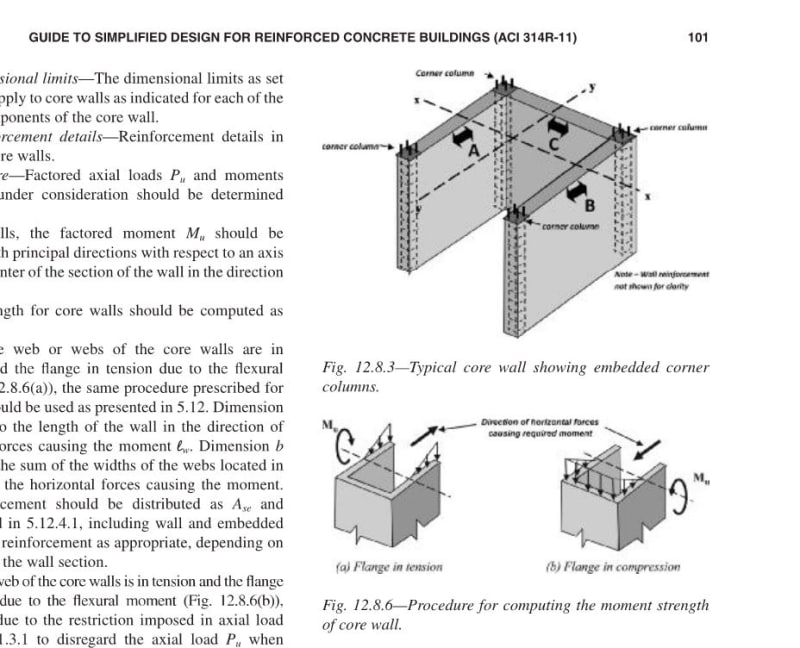This has been a subject of considerable interest to me. In my opinion, how complex the problem is depends on how fancy you want/need to get with this. In it's simplest form, looking at just principal axis flexure and shear, it's pretty straight forward. And I've included a decent reference for that below. Some of the complexities that can arise:
1) Often you've got two channels coupled together with all that implies with respect to coupling beam detailing and stiffness assumptions.
2) If you're doing your ASCE7 load casing by the book, you'll wind up looking at a bunch of non-principal axis P-M investigations. This sucks by hand.
3) There is the question of slenderness limitations for keeping the outstanding flanges from buckling between levels of restraint.
4) There is the question of whether one uses just the designated zones for flexural tension capacity or all of the bars, including those that don't yield.
5) There are the detailing aspects of which bars get tied etc which can we can never seem to full agree upon.
6) There is the question of how much flange width should be considered, both in tension and compression. Codes are finally getting around to chiming in on this.
7) When you're really taxing a flanged wall, as with seismic, there is the business about the final web strut punching through the flange rather than turning the compression around the corner of the tee intersection like a well behaved compression field.
8) Tallish, channel shaped shear walls will exhibit a warping stiffness, as little steel channels do. Looked at in detail, this complicates load distribution between various lateral elements and gets you into to all of the sectorial coordinate business.
I know of very few published resources that contain worked examples of this kind of thing. Here's what I can recommend:
- MacGregor / Wight Concrete text. I think it has a few basic examples of compound shear wall sections.
- Paulay & Priestley's seismic book gets into some examples.
- Most of Taranath's books have strong chapters on the sectorial coordinate business and other aspects. I believe this was the core of his graduate work before he went full on, rock star practitioner.
- This paper's kinda neat:
Link
- The program S-Concrete automates much of the P-M work and is a good tool for the investigation of sectional behavior.

